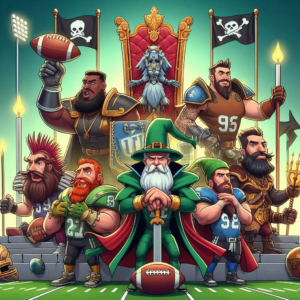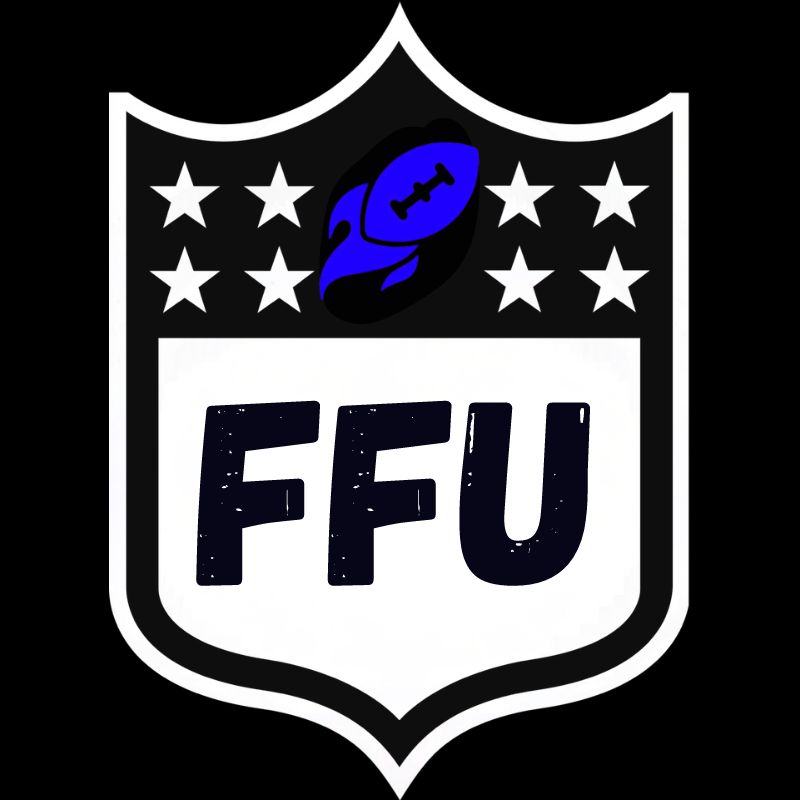For the general public, a standard fantasy football league suffices. If you’re reading this article, you may have grown weary of normal leagues and would like to try something new. Crash Course, a Fantasy Football Universe series, delves into unique formats. So, let’s start with Gambit Gridiron: Mastering Strategy in the Fantasy Football Gambit League.

How Does it Work?
This is your standard fantasy football head-to-head league with scoring and rosters open to league preference. It can range from 8 teams to 32 teams and there is no limit to the configuration of your league settings.
It’s your normal fantasy football league, with one twist.
How is it different?
What is the one twist you may be asking? A Coach, also known as a Gambit Card. This league features a single-round Pre-Draft in which each team selects a single coach to lead their squad.
The coach card is the single most important decision you will make in this league as it will shape your draft strategy significantly. As an example, in 2023 I was drafted out of the 12th slot in a 12-team league and I knew I was unlikely to get any of the top running backs or wide receivers since it was a 1QB league. This league was tight end premium, so I knew tight ends would be available with the 1.12 and 2.01 pick. As a result, I selected a Coach that gives me a tight-end premium bonus.
I then selected Travis Kelce and Mark Andrews with my first two picks, giving me the best two tight ends in the game in a league where my tight ends scored double what everyone else’s tight ends scored. That’s how you play to the coach strategy.
How does the Draft work?
As I stated above. The only difference between a Gambit League draft and a normal draft is the first round in which you must select your coach. The key, once again is looking at your draft slot to see which coaching card is most likely to benefit the players you can select at your spot in the draft.
If you are picking at the end of the round in a superflex league, don’t draft a coach that focuses on quarterbacks since at best you are just going to break even at the position with the elite quarterbacks.
A look at the Rosters
Rosters are open to league preference, but a typical roster is between 15-18 players with 10 starters and 5-8 bench spots. This is your typical redraft roster, balancing medium rosters with medium waiver wire depth.
How you construct your roster is a result of which Coach you draft. The teams that draft running back modifiers will go heavier on the running back depth as you would expect.
How does the Waiver Wire work?
Much like the rosters, your waiver wire needs can be reflected by your coaching strength. You will still be looking to find the typical waiver wire league winners, but with the added emphasis on the position that is of most strength to your team build.
How the scoring works
This is a two-sided answer. On one hand, the default league settings are typically pretty standard and are open to league preference, they are also uniform for all teams across the league.
On the other hand, no two teams will have identical scoring. Team-by-team scoring is completely dependent on which coach you drafted. You could have standard scoring plus a triple tight end premium, while your opponent could have standard scoring and double receiving yards bonus. That’s what makes this league fun. No two teams are scored alike.
The Consensus Strategy
- Draft to Your Coaches Strengths: This is probably the most important strategy. There is no point in drafting a Coach with a Quarterback multiplier if you then punt the quarterback position. All you would be doing is hoping to break even.
- Draft for Depth at Your Coaches Strength: Not only should you not punt your Coaching strength, but you should be going heavy on the position and drafting insane amounts of depth in case of injury or bye weeks. You simply cannot let your strength become your weakness.
My Strategy
- Work to Your Draft Slot: As I said earlier, there is no point selecting a Coach who plays to running backs if you are in a draft spot where you are going to miss out on the elite running backs. Take a look at which players you would like to draft when you are on the clock and attempt to select a coach that will benefit those players. It’s all about balancing coach/player chemistry on your roster.
- Lean into Your Weakness: If you are drafting at the end of the round and have missed out on the elite running backs as well as the running back style coaches, you might as well lean into it and wait on running backs. There is no point in forcing yourself to draft a running back when it won’t benefit you in the long run.
In Closing
This format is truly a passion project for those who love to play chess in a fantasy football league. The multiple layers of strategy required to make your team a success make this one of the most enjoyable experiences you will have in fantasy football.
Don’t forget to check out the rest of the Crash Course Series. Head over to League Tycoon and take a look at the 2024 Fantasy Football Universe Gambit League and check out the live stream below.

